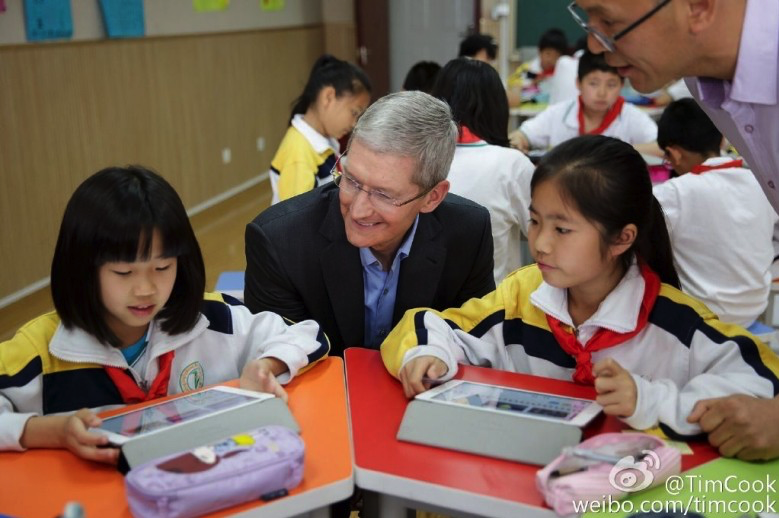 December 22, 2013: After months of false starts, Apple finally secures a deal with China Mobile to bring the iPhone to the world’s largest telecom company.
December 22, 2013: After months of false starts, Apple finally secures a deal with China Mobile to bring the iPhone to the world’s largest telecom company.
With 760 million potential iPhone customers in the offing, the deal shapes up as Apple’s most important yet for growing its brand in China. In fact, Apple CEO Tim Cook says the country soon will become the company’s biggest market.
iPhone comes to China Mobile
The move had been long in the making. Apple had been negotiating with China Mobile since the iPhone launched. Talks reportedly collapsed over Apple’s terms, which required revenue sharing.
Demand from Chinese customers certainly existed, though. As early as 2008, a year after Apple announced the iPhone, BusinessWeek reported that 800,000 to 1 million iPhones had gone AWOL after legitimate purchase. It was later claimed that 400,000 of those iPhone were being used, unlocked via hacks, on China Mobile.
Provided these figures were accurate, they represented around 10% of iPhones sold at that point. The number even surpassed all iPhones used in Europe at the time.
Still, negotiations between Apple and China Mobile dragged on. They finally started moving in 2013, when Cook met with China Mobile chairman Xi Guohua to discuss “matters of cooperation” between the two companies.
“China is an extremely important market for Apple and our partnership with China Mobile presents us the opportunity to bring iPhone to the customers of the world’s largest network,” Cook said in a statement when news of the deal broke. “iPhone customers in China are an enthusiastic and rapidly growing group, and we can’t think of a better way to welcome in the Chinese New Year than getting an iPhone into the hands of every China Mobile customer who wants one.”
Apple: Big in China
The China Mobile deal coincided with a renewed push into China on Apple’s behalf. Cook revealed that Apple designed new devices with the Chinese audience in mind. This was arguably most obvious with Apple’s decision to start making larger iPhones. The company turned its back on Steve Jobs’ dislike of big phones (which the Apple co-founder complained “you can’t get your hand around“). Apple released the 5.5-inch iPhone 6 Plus — which fell into the phablet category popular among Asian smartphone buyers — in 2014.
In addition, Apple committed to an astonishingly rapid expansion of its retail stores in China. The company set an ambitious (and successful) goal of establishing 40 Apple Stores in the country by 2016. (It opened its 56th store in China, Apple MixC Wenzhou, in November 2023.)
Not everything has been smooth sailing for Apple in China, of course. No doubt, 760 million possible customers sounds like a giant number. But only a fraction of those people find themselves in the position to be able to afford an iPhone.
Battle for the low-end Chinese smartphone market
The iPhone 5c, and now the iPhone SE, were nods to the lower end of the market. However, Apple never truly embraced the idea of creating a phone to combat cheap Android devices. As a result, Apple continues to duke it out with a variety of Android makers in China, none of which currently command even 25% of the smartphone market, according to Counterpoint Research.
Apple also continues to run into various problems with the Chinese government. In 2014, national security concerns raised in the state-controlled Chinese media resulted in Apple switching to China Telecom’s servers instead of its own to power iCloud for Chinese customers.
Apple also was forced to accept the Chinese government’s demands that it run network safety evaluations on all Apple products before they can be imported into the country. Apple gear additionally got booted off the list of approved state purchases in 2015, in favor of Chinese-made products. And China banned government workers from using iPhones in 2023.
Additionally, the COVID-19 pandemic created severe supply chain problems that exposed the fragile nature of Apple’s reliance on Chinese manufacturers. And violent protests broke out in late 2022 over working conditions in a Foxconn factory complex in Zhengzhou nicknamed “iPhone City.” For these reasons and more, Cupertino continues to accelerate plans to move some iPhone manufacturing out of China.
China and Apple: A ‘symbiotic’ relationship
Not all the news has been bad, though. The China Mobile deal got more iPhones into people’s hands as planned. And Cook reportedly struck a secret deal with the country’s leaders in 2016 to invest $275 billion of Apple’s money to boost China’s economy and “technological prowess.”
Earlier this year, Cook touted the “symbiotic kind of relationship” that Apple enjoys with China. The country now makes up Apple’s biggest market for apps worldwide.
Going forward, it seems China will continue to provide a major opportunity (and occasional headache) for Cupertino.


